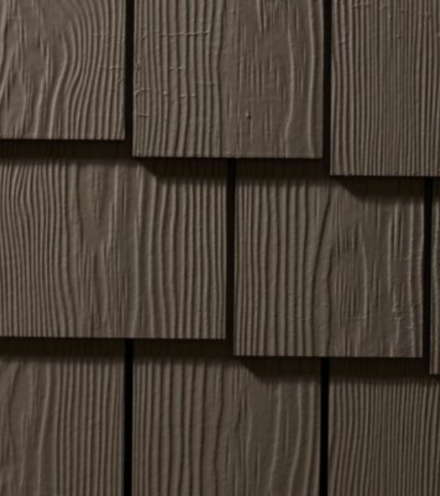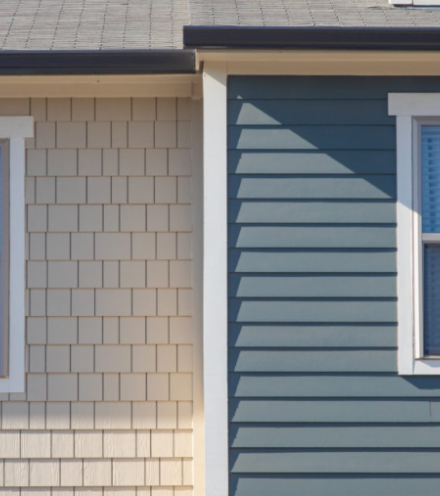Fiber cement siding has been growing in popularity for years now — and for good reason. It provides increased strength, durability, and design innovation, making this siding material a powerhouse product to work with. You may not have even noticed the number of buildings on every street that feature fiber cement siding. Stylish, modern, and traditional styles are all readily available, which is why contractors see an incredible uptick in fiber cement siding installation.
Considering fiber cement siding for your next home or commercial building project? It’s essential to familiarize yourself with the nitty-gritty details of fiber cement siding, as well as exploring the design options and possibilities. It is one of the few modern building materials that deliver perfect performance for both function and form.
This guide provides an informative introduction to fiber cement siding so that you can position yourself as an expert when it is time to select a siding option for your next renovation project.
Where Does the Name Come From?
Many folks mistakenly assume that fiber cement siding resembles concrete or another flat surface with a raw cement finish, but this couldn’t be further from the truth! Although the name typically leads consumers to picture cement, it actually resembles real wood. Fiber cement siding is produced with a smooth surface, a wood grain texture, or even a rough-sawn look to capture the traditional warmth and familiarity of wood siding.
This innovative siding material is referred to as ‘fiber cement’ because of its composition. The name may suggest that it’s just another type of cement, but it’s actually much closer to a composite that benefits from the combined strength of multiple materials, resulting in a heavy-duty finished product.
The Materials in Fiber Cement Siding
Fiber cement siding is a blend of Portland cement, ground sand, cellulose fiber, additives, and water. This unique composition gives fiber cement siding its elevated strength and durability while also allowing an attractive finished appearance that resembles modern woodcuts.
Fiber Cement Siding Styles
The modern wood look of fiber cement siding is one of the main reasons this material has become a popular choice for homeowners and commercial contractors. Whether builders are going for modern, rustic, traditional, or an experimental mixed-media approach, there are fiber cement siding options that can accommodate even the most creative exterior design ideas.
The selection is impressive, and unlike traditional wood, fiber cement siding has the increased strength and performance capacity to maintain its attractive appearance for much longer. Take a look at some of the most popular styles that are available with fiber cement siding.
Board and Batten

An iconic look that spans from coast to coast, board and batten fiber cement siding is a classic choice for homeowners looking for a vertical layout.
Lap

Fiber cement siding is produced in both traditional and smooth lap.
Shingles
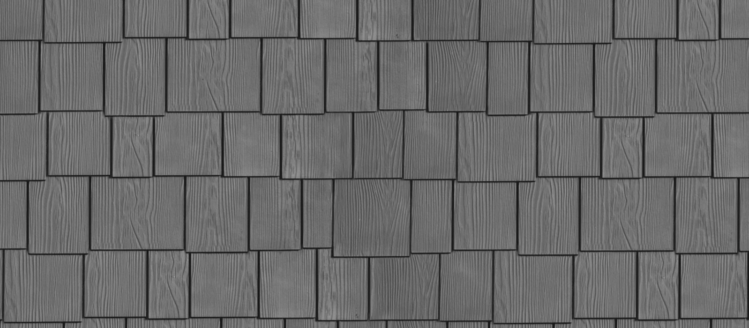
Shake shingles remain one of the most popular fiber cement siding designs for homeowners interested in creating a charming exterior that features dimension and depth.
Architectural Panels

Popular for use on lofts, condos, townhomes, and apartment buildings, architectural panels provide a sleek, modern exterior look that fits particularly well in urban landscapes and commercial centers.
Accessories
In addition to fiber cement siding, there are many other areas of the exterior that can benefit from this strong building material. Fiber cement has now extended to other uses, including trim, soffit, and beadboard.
Trim
Trim can provide visual detail and protection for vulnerable areas of the home’s exterior, like seams and edges, which is why fiber cement can be a smart choice.

Soffit
Covering the eaves, high-quality soffit provides advanced protection on many fronts. Ventilated fiber cement soffit offers adequate airflow while protecting the home against damage from moisture and insects.

Beadboard
Beautify exterior ceilings with fiber cement beadboard. Compared with traditional wood beadboard, fiber cement defends better against moisture, fire, and insect damage.

Backerboard
Because of its high-quality durability, fiber cement is also commonly used as durable backerboard.
Popular Colors
Adaptability is one of the key benefits of working with fiber cement siding, and this applies to the color choices that are available, too. Practically any look can be achieved with fiber cement siding. Take a look at some of the most popular colors used this year.
White

Stately and elegant, white fiber cement siding captures a timeless sophistication that consistently maintains its grandeur across generations.
Blue

Blue tones are making a name for themselves within the fiber cement siding world, particularly for their fresh vibrancy and contemporary charm.
Grey
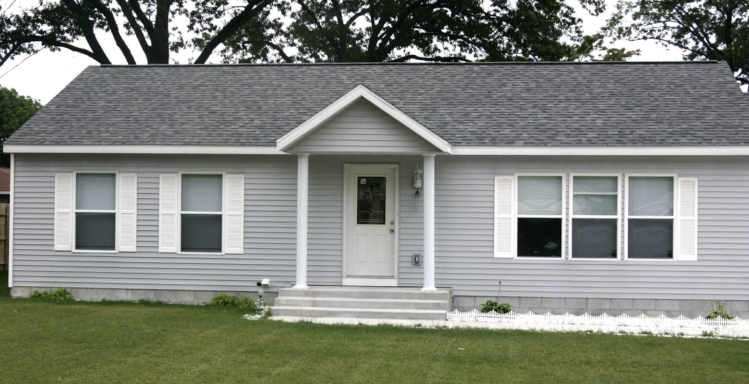
A classic color choice among homeowners with modern design interests, grey fiber cement siding captures a modest, understated style that is always on-trend.
Green

Beloved for its calm color tone and charming allure, green fiber cement siding looks particularly polished when paired with white trim.
Beige

Many homeowners select beige for their fiber cement siding because it further emphasizes the natural wood look of panels and shake shingles.
Red
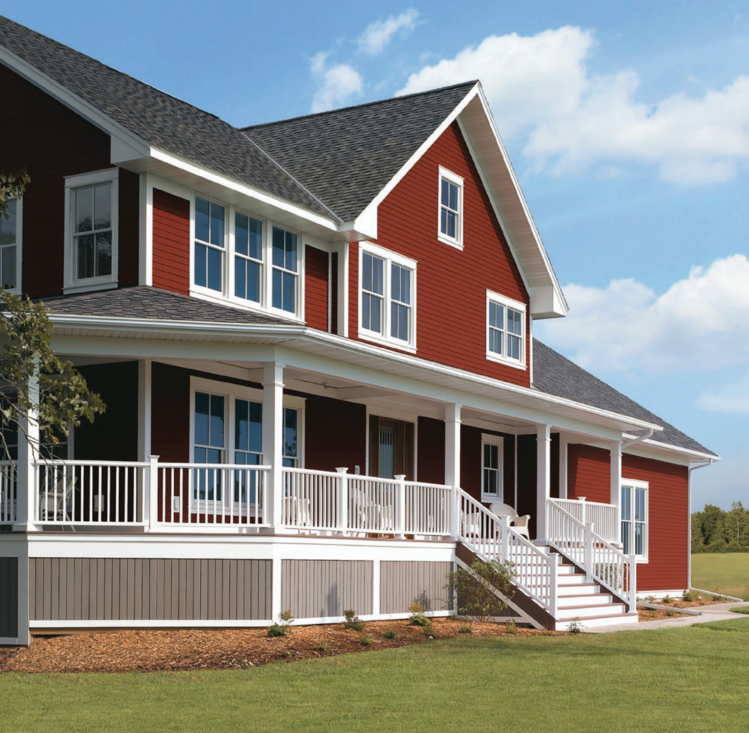
A favorite among homeowners who value pastoral charm, red is a popular color choice for fiber cement siding on homes, garages, and barns.
Durability — How Well Does Fiber Cement Siding Hold Up to Damage?
In essence, exterior siding is the first line of defense against the elements, like wind, rain, snow, sun, insects, rodents, woodpeckers, wasps, and more. Not to mention accidental impact, such as a baseball flying into the side of the home during the neighborhood kids’ backyard ballgame. The truth is that, no matter how quiet and serene the setting, the exterior siding is still likely to take a beating.
Unlike traditional siding options, like wood and vinyl, fiber cement siding offers enhanced durability that makes repair and replacement due to damage highly unlikely. This advanced protection can ease concerns while saving homeowners precious time and money.
So, what sort of durability does fiber cement siding truly offer? Take a look!
Hurricanes & Wind Resistance

In a hurricane, the home becomes a crucial element for survival as it covers the most basic human need: shelter. Hurricanes can strike the home in two significant ways, by producing a lot of water and tearing at the home with incredibly forceful wind gusts. Fiber cement siding offers one of the best defenses against these two threats by providing a water-resistant material that is strong enough to withstand severe wind.
Wood and vinyl can warp and grow mold, but fiber cement stands firm against moisture, and it is much less likely to crack, snap, or tear away during severe weather.
Fire-Resistant

Made from naturally flame-retardant material, fiber cement siding is one of the safest exterior finishing options homeowners can choose to protect themselves against wildfires, arson, and accidental home fires. It looks just like wood, but fiber cement siding is not nearly as flammable, so it is a great alternative.
Water-Resistant

Fiber cement siding is also water-resistant, which means that homeowners won’t need to worry about rotting, warping, or mold growth. Even homeowners who don’t live in flood zones can benefit from water-resistant siding because moisture is generally what does the most damage to a home’s exterior. Snowfall, rain, and general humidity can create enough moisture to damage susceptible siding, like wood or vinyl, but not fiber cement siding.
Impact-Resistant

Though the accidental baseball may be a concern for some, hail is the most common threat of impact for the average homeowner. Hail can pummel a home’s exterior, leaving siding with a rash of holes and rips in a matter of minutes, leaving structural beams exposed. Fiber cement siding is durable enough to withstand hail and other impacts, meaning fewer repairs in the long run.
Insect-Resistant

Termites, wasps, and woodpeckers tend to weasel their way in when it comes to vulnerable sidings, like wood or thin, gappy vinyl. Because of its durable composition, fiber cement siding is essentially impenetrable to insects and rodents, meaning homeowners won’t need to deal with mysterious holes, nests, scratches, or other damage that appears when pests try to stake their claim.
Sun Damage and Color Fading-Resistant

Most homeowners count on continual upkeep to keep their siding looking fresh by stocking up on enough paint and stain to last a few decades. That’s because daily Sun exposure can cause colors to fade over time, requiring touch-ups and repainting to maintain an attractive appearance. While repainting and restaining is a given for wood, vinyl, and aluminum siding, homeowners who invest in fiber cement siding can kick back and enjoy the fact that they’ve chosen a product designed to maintain its pristine appearance — no matter how many hours of sun exposure the home undergoes.
How Long Does Fiber Cement Siding Last?

By combining a unique blend of strong building materials, fiber cement siding is built to outperform and outlast traditional siding options. Style and manufacturing processes may cause some variation in the longevity of fiber cement siding products, but homeowners can generally expect a 50-year warranty on most fiber cement siding selections.
Which Climate is Best for Fiber Cement Siding?
Fiber cement siding is built to perform at high levels in all regions, regardless of humidity or weather trends, unlike the more vulnerable siding options that are limited to use in certain climates. Due to its advanced performance against moisture, fire, sun, wind, and insects, fiber cement siding can be particularly advantageous for use along the coast, in snowy mountainous areas, across arid desert zones, and in areas prone to wildfires, making it extremely versatile.
Fiber Cement Compared to Other Siding Materials
When put to the test, fiber cement siding outperforms traditional building materials by leaps and bounds. Take a look at some of the most common issues that homeowners deal with when choosing traditional (outdated) building materials.
Wood
Water and changing temperatures can do significant damage to wood siding. Warping and rotting can cause entire beams to suffer irreparable damage, meaning homeowners have to deal with individual beam replacements and then match the color with the existing siding. Flammability is another risk to wood siding that makes fiber cement siding the superior choice.
Vinyl
Vinyl siding is generally more affordable, however, the amount of upkeep and repair required can be a big drawback when compared to fiber cement siding. The sheer vulnerability of vinyl is no match for fiber cement, which can easily withstand many of the dangers, like exposure to rain, sun, wind, and impact, that tend to cripple vinyl siding each season.
Metal
Metal siding options provide a good level of impact durability, but they are still vulnerable to Sun exposure and can tend to fade over time, which gives fiber cement the advantage. Rust can also be an issue with metal siding. In addition, aluminum and steel have nowhere near the number of modern design options available with fiber cement siding.
Brick/Natural Stone
Brick and natural stone are beautiful siding options, and they also perform well when it comes to durability. However, minor leaks can develop near windows and seams due to seal failures because they are such rigid materials. Over time, these minor leaks can allow moisture to reach and weaken foundational beams, compromising the structure’s integrity. For that reason, fiber cement still outperforms brick and natural stone.
Commercial Applications of Fiber Cement Siding
From large scale rental properties to modern office buildings, developers have found fun and contemporary ways to take advantage of fiber cement siding. Some creative applications have explored linear layouts that give visual segmentation to the building, while others have used fiber cement siding to generate distinct details that call attention to storefronts and branding. Whether flashy or functional, fiber cement siding offers a range of designs and striking color combinations to captivate, even with commercial properties.

The Cost of Fiber Cement Siding
There are many factors involved when estimating siding costs, including the installation materials, style of product, and labor required. When it comes to calculating cost, fiber cement siding tends to require a larger upfront investment. For example, the average cost of vinyl siding for a 2,000 square foot home is around $9,000, while the cost of fiber cement is about $12,000.
However, it’s essential to factor in the long-term expenses associated with a particular siding choice, as well. For example, vinyl is much more vulnerable and is likely to require considerable upkeep and repair. Fiber cement siding, on the other hand, has very few maintenance costs and has a much longer lifespan than vinyl, therefore, fiber cement siding may be the more valuable material choice in the long run.
Installation
Precise installation is the key to getting the most out of fiber cement siding, and following the manufacturer’s installation guidelines can also impact warranty claims, so proper installation is critical. In addition to preparing the surface with flashing, and cutting the fiber cement siding face-down for clean, accurate angles, the proper tools, like 6d nails and 20 gauge, 3-5/8" C-studs should be used.

8 Reasons Why You Should Hire a Professional
It is certainly possible for skilled homeowners to install fiber cement siding, however, the expertise of a professional can ensure that the project is complete without a hitch, and their knowledge and experience can be invaluable. After all, correct installation can have a major impact on the performance capability of the siding. Here are just a few reasons why hiring a professional may be beneficial.
1. Time
Mistake-free precision often requires tacking on additional hours to the project. Hiring a professional can free up time for homeowners to focus on other important tasks.
2. Tools
The installation of fiber cement siding requires specific insulation tools, like circular saws with carbide blades and diamond tips for clean cuts, heavy-duty nails and studs, and appropriate flashing. Experts are familiar with what will and won’t work for a quality install.
3. Prep
Accurate measurements are key, and professionals have the experience to prep materials without making big errors or waste piles.
4. Safety
Cutting fiber cement siding may expose laborers to hazardous dust. Professionals are equipped for and familiar with the proper safety protocols that are necessary.
5. Understanding Insulation
Not all siding is compatible with the same insulation, especially if it is greater than 1” thick. Professionals can spot and correct insulation problems right away so that the project doesn’t require a re-do down the line.
6. Hanging Fiber Cement
Fiber cement siding is a heavy, rigid material to work with, so it requires adequate nailing with at least 1¼” penetration into structural studs. Pros are equipped for this level of precision.
7. Tolerances and Gaps
At least ¼” clear space should be left between fiber cement siding and flashing with at least 6” between the bottom layer of siding and finish grade. Tolerances and gaps can get confusing, but they’re necessary for a quality install.
8. Finishing
Caulk, paint, or finish will be required for an added layer of protection for the fiber cement siding. Pay attention to the manufacturer’s recommendations when selecting a specific finishing product.
Maintenance and Upkeep
Upkeep is significantly lower with fiber cement siding than other siding materials, and regular cleaning and maintenance can extend the lifespan of the long-lasting siding even further. An occasional (once or twice per year) spray-down with a hose can keep the fiber cement siding free of dirt and debris. In addition, caulks and sealants are recommended for reapplication when seams begin to show natural signs of wear and tear. Dent and cracks are unlikely, and there are patching compounds that can be used for minor touch-ups.
Make the Right Choice for Your Home With Allura Fiber Cement
If high-quality, durability, unmatched performance, and an abundance of style selections are on your list of priorities, invest in Allura fiber cement siding. Offering the best in strength, protection, and style, Allura makes premium fiber cement siding products that homeowners can depend on when creating their dream homes.

